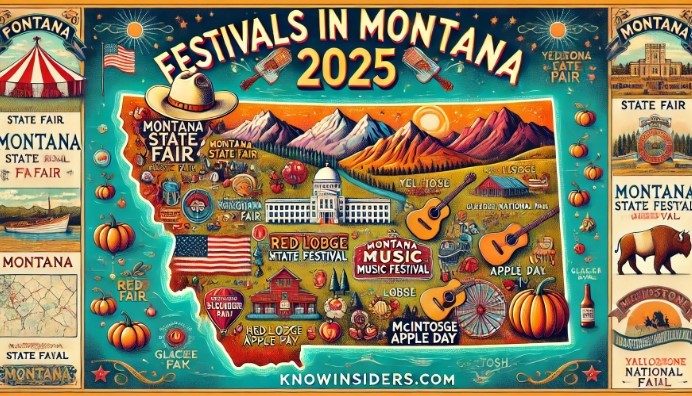Why Do So Many US Luxury Cars Have Montana License Plates?
| Table of Contents |
Wealthy car owners can evade taxes and emissions regulations in other states by taking advantage of a legal loophole. Stricter regulations might cause the practice to explode.
Why are Montana license plates so common across the nation, particularly on RVs and occasionally on luxury cars? The reason for this is that there are certain benefits that people can take advantage of when they title and register a car in the state of Montana. These benefits may be especially beneficial for an owner who owns multiple houses and addresses or who lives in an RV full-time.
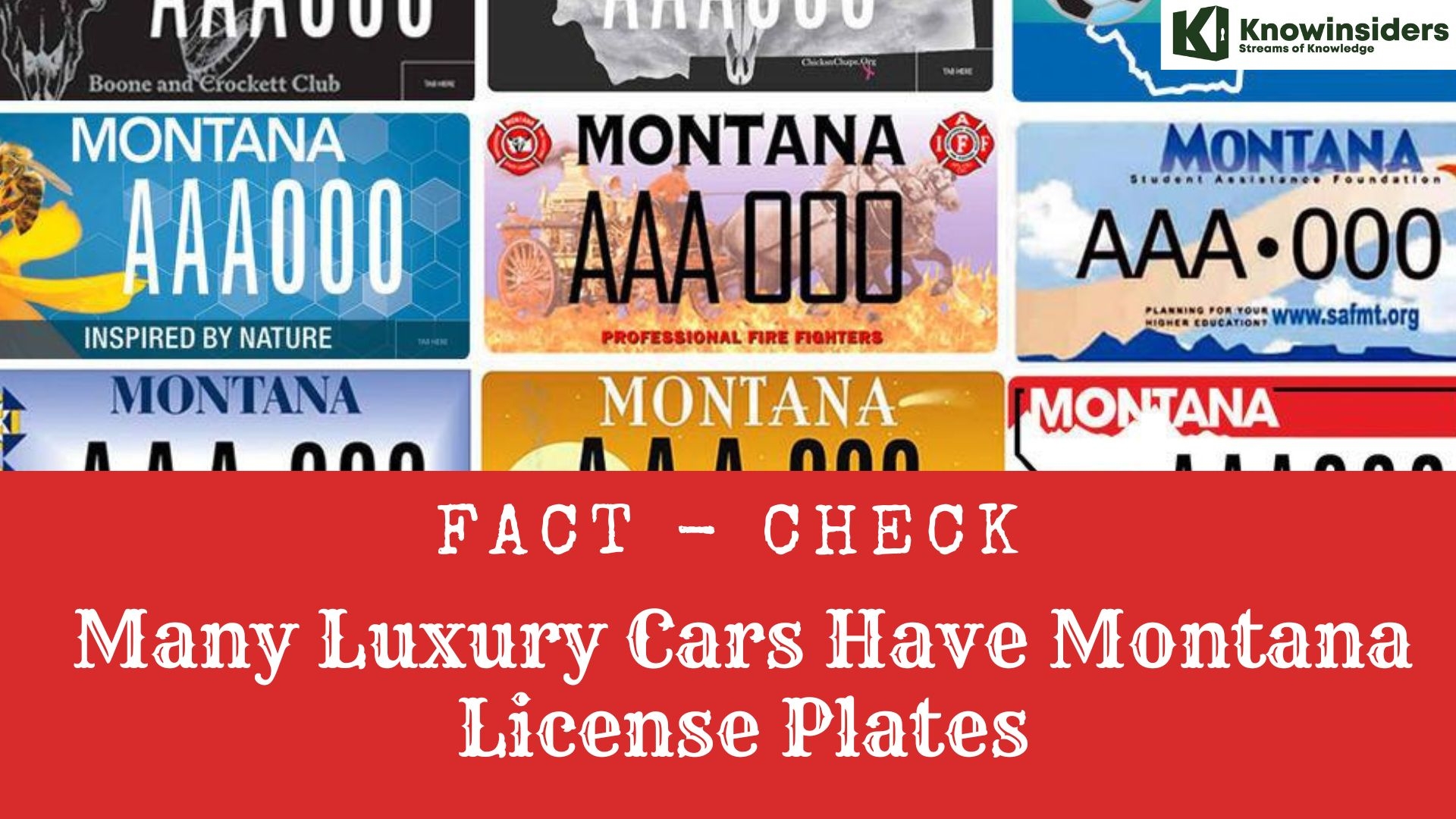 |
| Fact-Check: Many Luxury Cars Have Montana License Plates Knowinsiders.com |
The two most common reasons are:
1.Sales tax advantages
2.Titling process
Here is the fact-check on why many luxury cars have Montana license plates.
What are license plates and requirements?
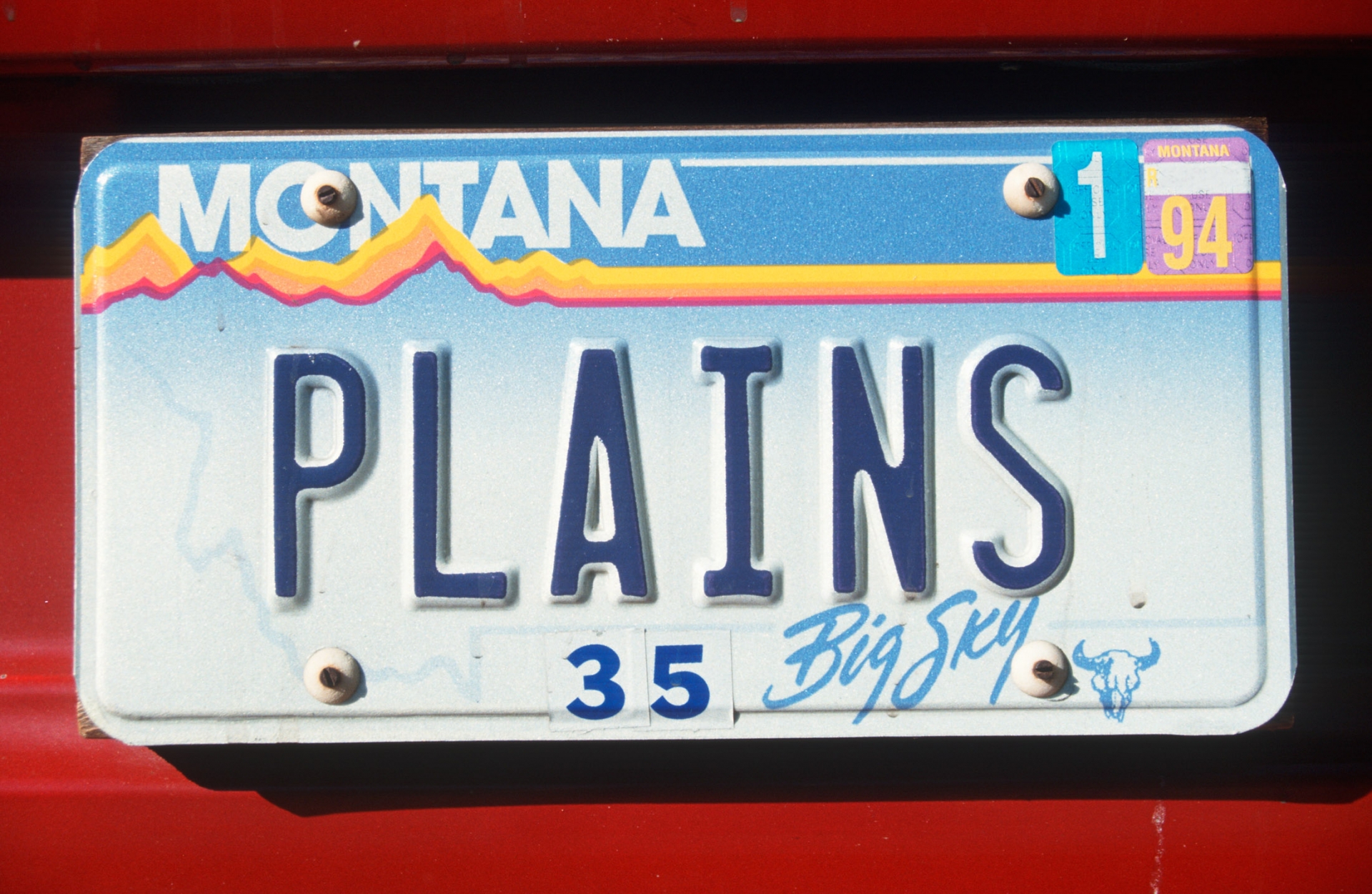 |
| Photo: Getty Images |
A car registration plate is a metal or plastic plate that is affixed to a motor vehicle or trailer for official identification. It is also referred to as a number plate in British English, a license plate in American English, or a licence plate in Canadian English.
Every nation mandates that road vehicles, including cars, trucks, and motorcycles, have registration plates. Depending on the jurisdiction, they might not be necessary for other vehicles like bicycles, boats, or tractors.
 |
| Photo: NBC Montana |
Obtaining a valid license plate requires that your vehicle be successfully registered in your state. Your car's title serves as proof of ownership, and you'll also need a variety of state-specific documents in order to register your car. The majority of the time, states demand that you present a combination of your driver's license, proof of insurance, the vehicle's title in your name, and details about the make, model, and odometer reading.
Even though you are able to buy auto insurance even if you do not own a car, you might not be able to include coverage for the car itself on your policy if it is not registered. You also won't have license plates or the necessary tags to indicate a legitimate registration if you don't register.
The temporary license plate is issued during the registration procedure, which usually occurs after a car is bought from a dealership. Your auto policy covers a vehicle with temporary plates because you must provide proof of insurance as part of the registration process before you drive your newly acquired vehicle off the dealer's lot.
Why Do Many US Luxury Cars Have Montana License Plates?
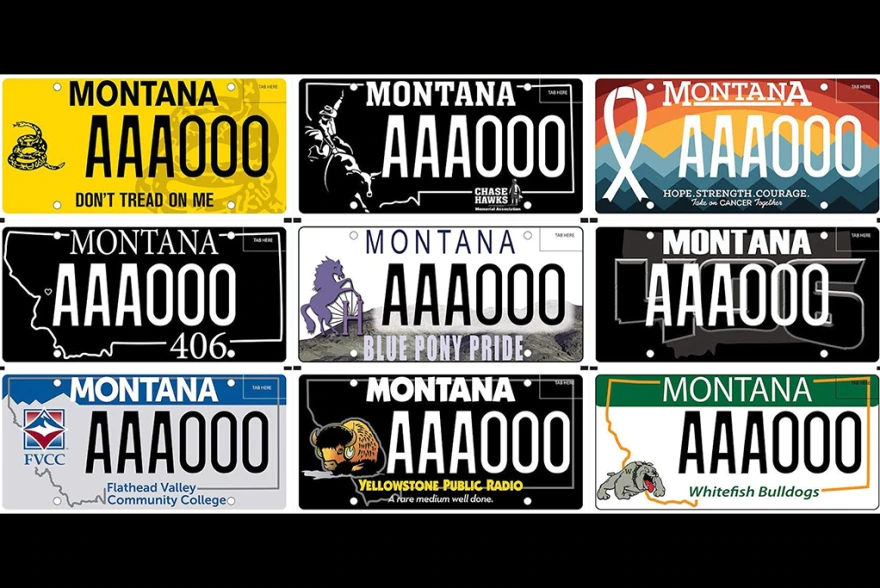 |
| Photo: Autotrader |
1. Sales tax
Vehicle sales are exempt from Montana's sales tax. Thus, if the car you're buying is legal to title in Montana, you might be able to avoid paying sales tax that you would otherwise have to pay if you had to title it in a different state.
Now is the time to make sure you're abiding by all applicable rules and laws and not engaging in tax evasion or fraud. However, you might be able to title your car in Montana and avoid paying sales tax if you have a valid multiple-state residency, a full-time RV, or some sort of domicile there.
2. Title process
Unless you are a resident with a Montana license, you will need to form a corporation in the state of Montana in order to accomplish this, but most people don't do that. The majority of people live in one or more other states. In Montana, they incorporate and register the car under that corporate name. In order to title the car in Montana, you will need to pay a service to become a registered agent and pay some corporation filing fees, which are typically a few hundred dollars.
3.Insurance considerations
Insurance concerns must also be taken into account, as obtaining insurance for a car with a Montana title implies that you are certifying to your insurance provider that the car is registered in Montana. Also referred to as the car's garage location. Here's why you should double-check that you aren't giving your insurance company false information about where your garage is. You might assume that you could just tell them, "Hey, it's in Montana," but if you have an accident or damage claim of any kind, whether or not it was your fault, you might run into problems where the insurance company tries to reject your claim on the grounds that you gave false information about where it is garaged on your application.
For what reason do they act in this way? Since Montana is a safer state, your insurance rate may be lower if it is determined that you drive your car there the majority of the time. However, you may be unwittingly committing insurance fraud if it turns out that you live in a large city, such as downtown Seattle or downtown Chicago, where rates are higher due to increased risk of damage, theft, and accidents.
Therefore, before placing insurance on the vehicle in Montana, you want to make sure you get good legal advice from an attorney and good insurance advice from your insurance agent. If you still have a garage address and your Montana title vehicle, you might still be able to obtain insurance; just make sure your situation fits the right usage of this procedure.
That explains why there are so many expensive motor homes, exotic cars, and high-end vehicles with Montana license plates. Take note of the number of Montanan license plates the next time you pass an RV resort or an exotic car meet-up. It may surprise you to learn how common it is, even if you're not near Montana.
The Montana Scheme
It may seem like a lot of fuss over a piece of metal when it comes to the Montana car registration debate. But there is actual money—as well as moral considerations—at risk.
Even more so than not, car owners from Mendocino, California, to Miami are registering collectible vehicles in Montana, even if they don't reside there. Some create an LLC in the state to obtain a mailing address and a semblance of residency status. Some obtain a property or mailbox address where they can establish their residency in Montana.
According to the Montana DMV, 10% of all McLaren P1s ever produced—vehicles valued at well over $1 million each—were registered in Montana as of 2021. Montana was home to four of the 100 Pagani Huayras that were ever produced. Each of them had a $2.5 million listing price.
Montana has two noteworthy advantages. First off, personal property is exempt from sales tax. (The other states with no sales tax are Oregon, Delaware, New Hampshire, Alaska, and Delaware.) This implies that a buyer of a new Lamborghini spending $500,000 won't have to pay an extra $36,000 in taxes to purchase it. (For example, the sales tax in California is 7.25%.) Even for those who can afford it, this is not small change. Many think it's a wise decision.
Second, yearly car inspections and emissions tests are not mandated in Montana. This is because, with a population of less than half that of the Queens, New York, borough, it lacks any populated areas that are federally classified as "non-attainment" to comply with the regulations of the Clean Air Act. In contrast, owners in California are required to make sure that any car manufactured after 1975 satisfies emissions regulations and is capable of passing safety checks.
Even relatively pedestrian 911s have Montana plates, something that would have been uncommon ten years ago. This is evident on a drive to the well-liked Friday morning car meets at Newcomb's Ranch outside of Los Angeles.
A Legal Loophole
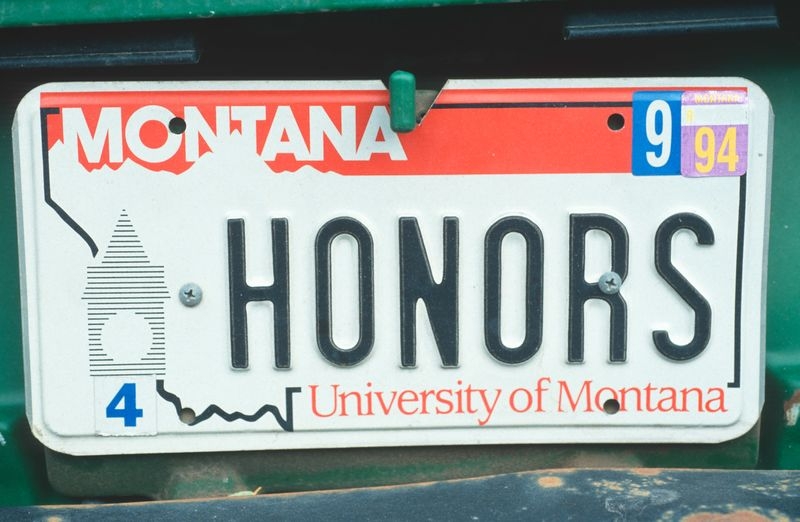 |
| Montana currently offers at least 14 license plate designs. Photographer: Joe Sohm/Visions of America/Universal Images Group Editorial |
Technically, the practice is legal. Companies help facilitate it. Search for “how to register my car in Montana” and you’ll see a dozen sites offering services to help clients form LLCs. You needn’t even set foot in the state. They’ll remotely handle the registration titling and fees.
Law enforcement authorities and legislators are familiar with the scheme. (California State Police have started cracking down on the residential discrepancies of drivers pulled over for other infractions with California licenses and out-of-state plates.) In 2017, Montana legislators proposed a sales tax of up to 1% on cars and recreational vehicles worth more than $150,000; aimed at out-of-state enthusiasts, House Bill 650 was nicknamed the “Ferrari tax.”
At the time, the Bozeman Daily Chronicle estimated that the proposed tax could raise $2.5 million annually for the state. But car and RV dealers objected—strongly. Ultimately, an $825 “luxury” fee was added to ordinary registration costs for vehicles worth more than $150,000.
In addition to normal registration fees, individual counties in Montana may also impose a so-called local option tax of up to 0.7% of a vehicle’s retail value, providing direct revenue. As of August 2021, Big Horn, Deer Lodge, Flathead, Granite, Phillips, and Richland counties lacked that local option tax. Not surprisingly, Flathead, Granite, and Deer Lodge counties have the largest amount of luxury vehicle registrations, according to data in a vehicle registration primer for the Montana DMV. All told, light vehicle registrations contribute roughly 4% of total revenue collections for the state, according to the primer.
Personal Ethics and Risk
Unless and until it becomes outright illegal, the decision to title something like a $2.4 million Ferrari F40 in Montana falls to the individual car owner making personal ethical choices. Many collectable cars are denoted as “gross polluters” in the state of California and do not pass emissions tests. To register them elsewhere is to effectively cheat the system that California officials set in place to help reduce air pollution for all.
Then there are the tax issues. If you can’t afford the taxes to register your supercar in the state where you live, perhaps you can’t afford the car, says Barry Ritholtz, a proud vintage Corvette and Defender owner and chairman of Ritholtz Wealth Management LLC.
Montana Has an Insane Variety of License Plate Options
When you first visit the website of the Montana Motor Vehicle Division to peruse the state’s offerings and pick a plate of your own, you’re first shown the “standard plate” — but then you’re given the option for four more “standard plate” designs.
Below that, the website lays out another interesting provision: the requirements for registering original plates for your vehicle. Got a 1967 Ford Mustang that you want to register in Montana? Find a pair of 1967 Montana license plates and the Montana Motor Vehicle Division will allow you to re-activate them for use on your vehicle. These aren’t to be confused with “antique” plates, which are new plates featuring throwback designs from decades past — which, of course Montana also offers. Nonetheless, this throws another 50 or so potential designs into the mix.
Beyond that, provisions are outlined for military plates, veteran plates, amateur radio operator plates and so forth. But the real fun starts when you dive down the rabbit hole that is the “Available License Plate Designs” page and begin to look at all of the different sponsored plates offered. You’re taken to a screen showing 14 different license plates, all representing a different pastime or cause. But these are mere categories — each image serves only as an example of the madness that lies within when you actually dive into that category. A look into the “Agriculture and Forestry” section shows six different distinct designs to choose from, including those for the Montana Department of Livestock, the Montana Timber Legacy Foundation and the Montana Weed Control Association.
The Government and Communities section reveals 23 different options, representing many cities, towns and Native American reservations in the state, with some jurisdictions receiving multiple designs. The Montana Quilters get a plate in the Arts & Culture section, while the Montana Snowmobile Association and the Outlaw Baseball Club both have designs under the Sports & Recreation category. Two designs didn’t fit into any of these categories, and were thus given their own “Other” section, while the Service Organizations & Associations category houses 66 unique designs.
This massive variety is the result of Montana’s “Sponsored Plate” program, which allows organizations to submit their own designs, provided they complete an application and pay a $4,000 fee. Each of the unique sponsored plate designs requires drivers to make a yearly donation to the charity or cause at hand, making the litany of designs not only fun, but also a great fundraising method for each of the programs represented.
How to Register for License Plates in Montana
1. Montana Car Registration Processing Information
The following are the essential details you should be aware of before visiting the department of motor vehicles: where to go, what to bring, and what to anticipate. Within 60 days of establishing residency, new residents are required to register a new vehicle. If you wait too long to take care of this, you could be fined several hundred dollars.
Currently, Montana consists of 56 counties (a helpful interactive map can be found here), and each county has its own county treasurer DMV office. Choose the one nearest to you and review each one's specific hours. These offices typically open at seven or eight p.m. and close at five p.m.; however, most don't process anything after 4:30 p.m. Remember this for the day you choose to leave; generally speaking, the earlier you can arrive at work, the better.
Transactions related to initial registration must occur at these physical offices. In certain circumstances, renewals can be completed online; however, there is presently no option other than in-person registration for new registrations.
The great majority of automobiles will be classified as "Light Vehicles," which include vans, sport utility vehicles, passenger cars, and pickup trucks weighing less than one ton. Currently, Montana offers the following three registration periods: 12-month, 24-month, and permanent. Regardless of the preferred registration period, individuals wishing to register a vehicle in Montana must present their title and proof of sale to the county treasurer's office.
In Montana, a vehicle's age determines the registration fee. New and cars under four years old must pay a total of $217, cars five to ten years old must pay $87, and all light vehicles eleven years or older must pay $28. Interestingly, a three percent administrative fee is included in these fees and is charged each time the transaction is finished.
The county tax is an additional expense that should be mentioned and varies based on the location. At the discretion of the local treasury office, expedited delivery of the registration and Montana license plate is an option for those who are in a rush.
In addition, there is an optional $10 donation to state parks and a $10 fee for local law enforcement support for individuals applying for permanent registration. You should be aware of a considerably different payment scale if your car does not qualify as a "Light Vehicle." This difference is mostly due to size rather than age.
You cannot properly register your car until you have completed the titling process if, for whatever reason, you do not currently own the title. If you think you might need one of these, make sure to get in touch with the office in advance and explain your circumstances. Frequently, these require a separate appointment to assess and properly facilitate.
2. Options for Getting a Montana License Plate
After you have successfully registered your vehicle in Montana and paid all associated fees and costs, you can then decide what type of license plate you wish to receive from the county treasurer’s office.
There are hundreds of different Montana license plate options currently available, everything from standard plates to highly specialized sponsored ones with all kinds of artistic designs. These cost more than the standard-issue plates, but the funds directly go in support of an incredibly wide variety of causes relevant to the state’s needs.
Here’s a complete listing of all the current Montana license plate offerings:
Agriculture and Forestry
Thirteen different variants.
Cost range from $60 to $90.
The income from the sales of these plates goes to benefit farmers, wildlife and livestock communities located in Montana.
Antique
Three different variants.
Standard vehicle registration fee plus $5-30.
Only vehicles more than 30 years old are applicable.
Arts and Culture
Four different variants.
Cost range from $60 to $70.
Funds generated from these plates go to aid non-profit community groups that foster cultural and artistic activity in Montana.
Collegiate
- Nineteen different variants.
- Cost cost ranges from $70 to $80.
- Proceeds go to support scholarships and schools of each associated collegiate institution.
Education
- Thirteen different variants.
- Cost range from $60 to $100.
- The funds from each plate go to benefit specific educational programs located within the state.
- Government and Communities
- Sixteen different variants.
- Cost range from $60 to $90
- The income these plates generate goes towards a wide array of causes ranging from indigenous communities to local veterans.
- Military
- Twenty-five different variants.
- Flat $10 production cost.
- These plates recognize all major branches of the US military both active, retired and affected families.
- Museums and History
- Thirteen different variants.
- Cost range from $60 to $70.
- These colorful plates mark important moments of Montana state history, and proceeds go to fund related educational museums and foundations.
- Parks and Environment
- Thirty different variants.
- Cost range from $60 to $90.
- The income generated from the sales of these plates helps protect the local parks, wildlife, and unique environmental features of Montana.
- Service Organizations and Associations
- Forty-nine different variants.
- Cost range from $60 to $90.
- The widest range of any Montana license plate section, each one supports a unique cause that ranges from youth education, aid to the needy and protecting local endangered species.
- Sports and Recreation
- Twenty-two different variants.
- Cost range from $60 to $90
- The proceeds from the sales of each plate goes to support associations focused on activities ranging from backcountry hunting to golf.
- Wildlife and Other Animals
- Thirty different variants.
- Cost range from $60 to $90
- The funds raised from these plates go towards the various refuge and conservation centers of wildlife unique and important to Montana.
- Youth Groups
- Five different variants.
- Cost range from $60 to $90
- The incomes from the sales of these plates benefit individuals, teams and local organizations and communities dedicated to supporting children in Montana.
- Other
- No additional fees required
- These plates cover those with physical disabilities or amateur radio operators.
As you can see, there are plenty of options to find a license plate that not only fits your budget and the personal style of your vehicle but also supports a worthy cause.
3. Temporary Tags and Special Circumstances
The county treasurer's office closest to you will probably issue you a temporary permit that is valid for a maximum of 40 days if you choose to buy a plate that is not currently on sale.
Simply place the paper tags in the office-provided plastic container and place it toward the back of the car, either on the rear windshield or where a license plate normally is to use these temporary tags. As soon as your permanent tags arrive, you must remove these tags and dispose of them properly.
For standard plates, there will be an additional $25 fee for personalized orders; additional expenses and a special application are needed for sponsored plates. Expect a longer wait time for the creation and mailing of these plates; in the interim, temporary tags will be used in their place.
After reading through all of this material, registering a car in Montana may seem like a huge challenge, but in actuality, it's much easier than that. There are services available to assist people in processing their applications, which can make things easier, but ultimately the least expensive option is to learn about the procedure, determine your needs, and adhere to the state of Montana's recommended steps.
You can finish the registration process for your Montana vehicle in a few hours if you are patient and do your research beforehand. You can drive anywhere you want in the Treasure state in 2022 and beyond after you have this and your license plate securely attached to your bumper.
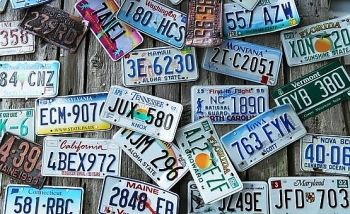 How to Trace Car Owner in the UK with A Partial License Plate How to Trace Car Owner in the UK with A Partial License Plate If you are looking for ways to find a car owner with just a partial license plate, this article is just right for you. Knowinsiders ... |
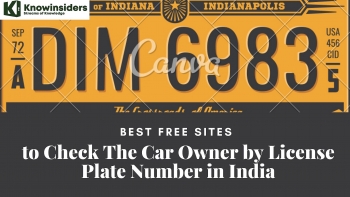 How to Check The Car Owner in India by License Plate Number How to Check The Car Owner in India by License Plate Number How to check the owner of a car by license plate number in India? Find out the easy ways to trace the owner of a ... |
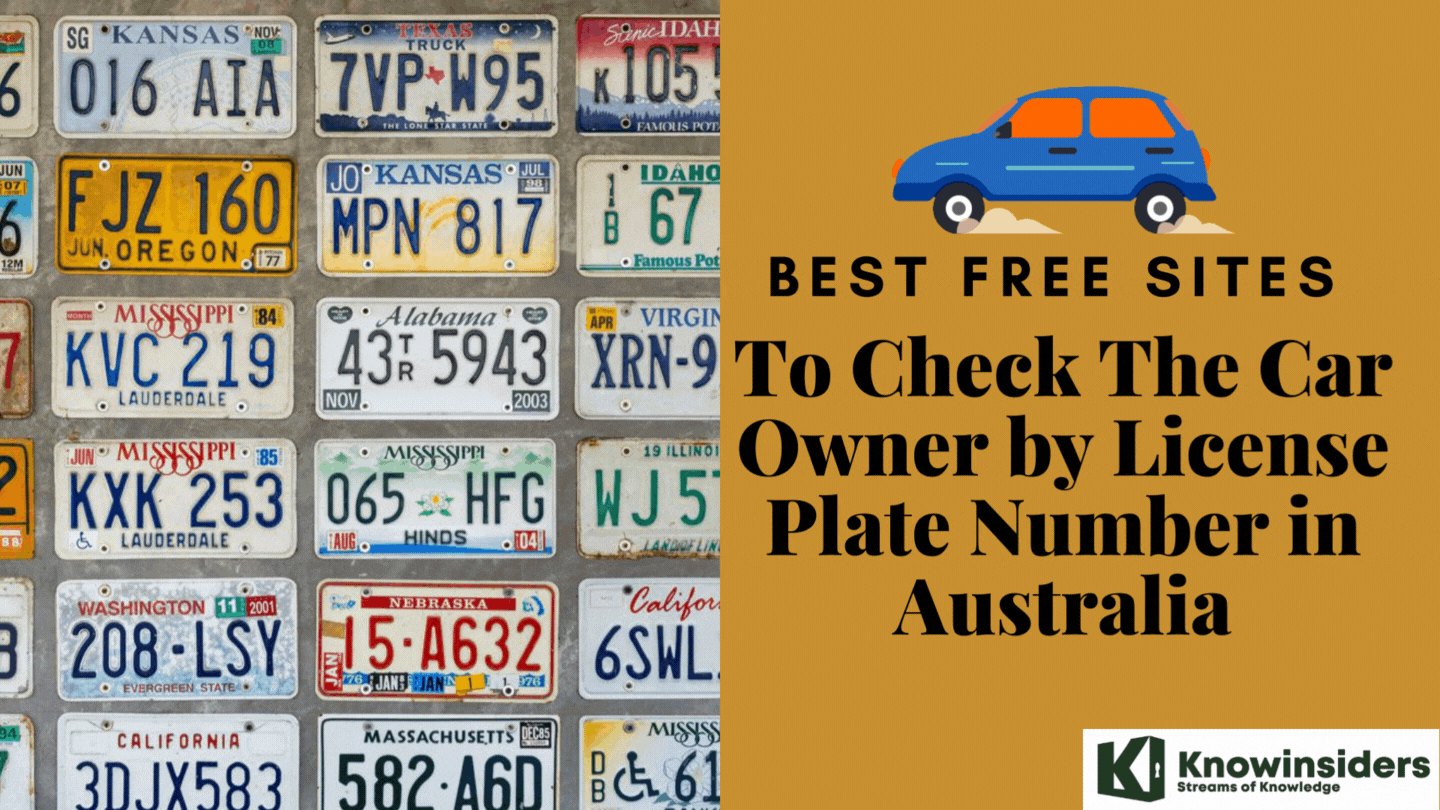 How to Check The Car Owner in Australia by License Plate Number How to Check The Car Owner in Australia by License Plate Number If you are wondering if it's possible to check the license plate number in Australia, the answer is yes. Keep reading the article below to ... |
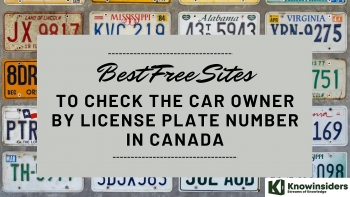 How to Check The Car Owner In Canada by License Plate Number How to Check The Car Owner In Canada by License Plate Number How to check the owner of a car by a license plate number in Canada? Yes. Definitely. Here are the easy ways to trace the ... |


